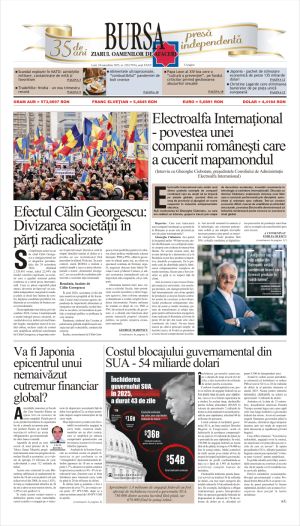Cristina Mihalaşcu
The case of the Roman-Catholic Cathedral "Sf. Iosif", a historical monument which is part of the Romanian heritage, next to which a developers is currently raising a 19-floor building, came to the attention of the European Commission which monitors the Romanian legal system. His holiness Ioan Robu yesterday said in a press conference: "Following the request made by the officials of the European Commission which monitors the Romanian legal system, we have drawn up a report concerning the progress of the lawsuit against the public institutions which have issued the building permit. The ruling of the three judges in Ploieşti, which allowed construction to resume, could very well confirm the need for the Romanian legal system to be monitored".
Mr. Robu said that the Bucharest Roman Catholic Archdiocese (ARCB) has resubmitted the request to bring to the attention of the competent institutions the plan to expropriate the 19-floor high "Cathedral Plaza" building which was erected right next to the cathedral, for reasons of public interest. The Romanian Senate suggested the expropriation in 2007, but the Parliament did not approve or implement this decision.
The Ploieşti Court of Appeal denied the appeal filed by the Roman-Catholic Archdiocese, which alleges that the construction erected near the cathedral is illegal.
The Court explained its ruling claiming the fact that the Ministry of Culture, Religions and of the Romanian Heritage (MCCPN) did not set the protection perimeter of the historical monument. The court ruling said that based on the historical monument law 422/2001, the protection perimeter for historical monuments should have been determined within three months after the enactment of the law, which MCCPN and the Romanian Historical Monument Commission failed to do.
According to Archbishop Ioan Robu, the ruling of the Court of Appeal represents a twisted interpretation of the provisions of the law 422/2001, because the law provides that if a protective perimeter was not set, the default protective perimeter would default to a 100 meter wide area for monuments located in cities. The Ministry notified the Archdiocese about the protection area as early as 1998, which is when the developer of the 19-floor building, Millenium Building Development SRL, acquired part of the land. Ioan Robu said: "The court shifting its own blame towards other authorities serves as a method to try and conceal the fact that they are guilty of issuing an illegal ruling. The judges that made the ruling also did everything they could to divert attention from the evidence that we have produced". The Archdiocese will ask for the revision of the Court"s ruling. Archdiocese officials also said that evidence on file was deliberately ignored.
Meanwhile, the Archdiocese has filed a memo with the Ministry of Culture, requesting the building permits that the Ministry awarded to the developer be revoked, but has yet to receive an answer.
The trial involving the Roman-Catholic Archdiocese, "Millenium Building" and the public institutions that issued the building permits has been going on for three years.












































